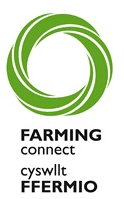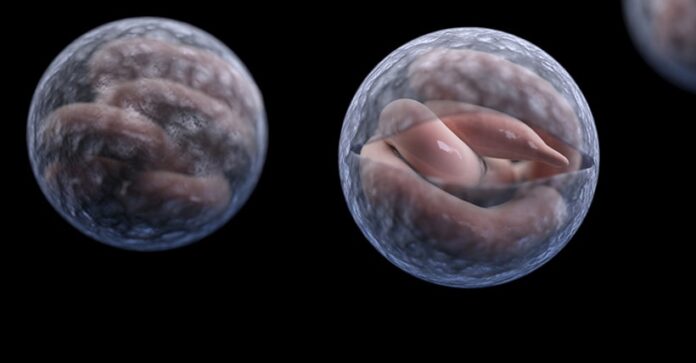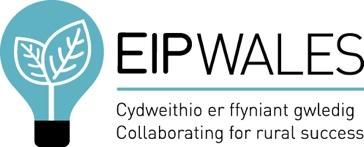
Protocols to tackle persistent cryptosporidium infection impacting lamb and calf health and performance at a Welsh livestock farm are being informed by the findings of a European Innovation Programme (EIP) Wales project that pinpointed the source of the micro-organism.
Mike Lewis and Liz Lewis-Reddy were among seven farmers in Powys who embarked on the EIP Wales study to understand the pathways of cryptosporidium infection in sheep and identify measures to control and prevent the disease in their flocks.
Although the couple didn’t believe they had an issue with infection in their sheep, by participating in the project they were able trace the origins of cryptosporidium to control it in calves and to prevent it passing to their lambs.
They run a herd of rare breed Ancient Cattle of Wales together with a sheep flock on an organic, forage-based system on their family’s 150-acre hill farm, Brynhoveth Farm, near Llandrindod Wells.
Calves had been developing a persistent, severe scour and the cause was identified as cryptosporidium.
Through the EIP Wales project work, sampling of livestock water sources on the farms was undertaken by Dwr Cymru Welsh Water (DCWW), in early March before lambing, in mid-April, and in mid-June, after lambing.
Faeces from newborn lambs were also sampled.
The study showed that cryptosporidium was commonly detected on the farms involved in the project, but more frequently in water than in lambs.
Mike and Liz discovered that the micro-organism was being introduced to calves through river water; the field where cows calve in the spring sits alongside a river that is prone to flooding in the winter resulting in cryptosporidium in the water contaminating the pasture.
“Without realising it we were infecting our calves with cryptosporidium,” says Liz.
The project has provided evidence to help inform measures around infection risk at the farm.
“We can’t control what happens in the river, but we can limit the risk to our calves,” says Liz.
Calves are given an oral preventative solution from 24 hours of age.
The product reduces the viability of the cryptosporidia in the gut and cuts the shedding of oocyst numbers, limiting the spread of the disease.
Liz said the project had been a ‘win-win’ situation for the farmers and for DCWW.
“They were supporting us to find solutions for us and for them,” she says.
Biosecurity measures at her farm are already very high but management options recommended to all the farmers to limit the risk of cryptosporidium include:
- Steam cleaning buildings to kill oocysts
- Frequent cleaning and disinfection of livestock sheds; research has found that 3% hydrogen peroxide and hydrogen peroxide-based disinfectants are the most effective at reducing the viability of cryptosporidium oocysts. Disinfectants are less effective on oocysts which are in faeces, therefore thorough cleaning of sheds is advised before disinfection.
- Frequent bedding down with straw
- Quarantining of scouring animals
- Ensuring lambs and calves quickly receive adequate quantities of good quality colostrum
PANEL
Sampling was carried out an average of four times during the lambing season on each of the farms involved in the EIP study.
A total of 156 sheep faecal samples have been collected to date – an average of 22 per farm – as well as samples from other species including cattle, dogs, rabbits and pheasants.
Cryptosporidium was detected in lambs on all but one farm.
Water samples were taken on four of the farms three times between March and June – cryptosporidiumwas detected in water at all of those farms; it was found in water from two of the three boreholes tested too.
Cryptosporidium was detected more frequently in water than in lambs and cattle seemed to be a main contributor for contamination of the water.
Lambs become less susceptible to disease the older they are but animals with previous exposure are not protected from re-infection.
Even animals not showing clinical disease can be shedding oocysts in large numbers of oocysts.
EIP Wales, which is delivered by Menter a Busnes, has received funding through the Welsh Government Rural Communities – Rural Development Programme 2014-2020, which is funded by the European Agricultural Fund for Rural Development and the Welsh Government.
Help keep news FREE for our readers
Supporting your local community newspaper/online news outlet is crucial now more than ever. If you believe in independent journalism, then consider making a valuable contribution by making a one-time or monthly donation. We operate in rural areas where providing unbiased news can be challenging. Read More About Supporting The West Wales Chronicle






















